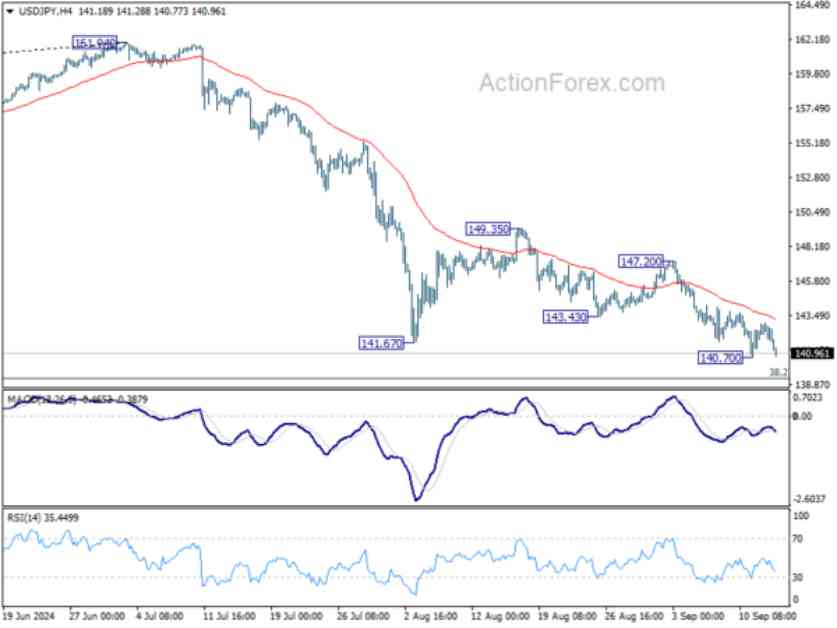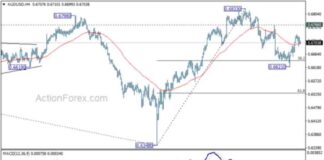USD/JPY Forecast: Analyzing the Current Market Conditions
The USD/JPY currency pair has been experiencing some fluctuations recently, with the price staying above the temporary low of 140.70 despite a current dip. The intraday bias remains neutral for now, but the overall outlook remains bearish as long as the resistance at 147.20 holds. If the pair breaks below 140.70, it could signal a continuation of the downtrend from the recent high of 161.94, potentially leading to a test of the support level at 140.25 and even the fibonacci level of 139.26.
In the bigger picture, the fall from the medium-term top of 161.94 is viewed as a correction of the uptrend that began from the low of 102.58 in 2021. If the pair continues to decline, it could reach the 38.2% retracement level at 139.26, which is near the support level at 140.25. This area could act as a strong support zone and potentially trigger a rebound. However, the downside risk remains significant as long as the 55-week EMA (currently at 148.93) holds. A sustained break below 139.26 could open the door to a deeper decline towards the 61.8% retracement level at 125.25.
Factors Influencing the USD/JPY Pair
Several factors are influencing the USD/JPY pair’s movements in the current market environment. One key factor is the ongoing geopolitical tensions between major economies, including the United States and Japan. These tensions can impact investor sentiment and lead to increased volatility in the currency markets.
Another factor to consider is the monetary policy decisions of the respective central banks. The Federal Reserve in the US and the Bank of Japan play a crucial role in shaping the economic outlook and influencing the value of their respective currencies. Any changes in interest rates or policy statements from these central banks can have a significant impact on the USD/JPY pair.
Moreover, economic data releases such as GDP growth, inflation rates, and employment figures can also influence the direction of the USD/JPY pair. Positive economic data from either country can strengthen their respective currencies and lead to an appreciation in the USD/JPY pair, while negative data can have the opposite effect.
Technical Analysis of the USD/JPY Pair
Technical analysis is a crucial tool for traders and analysts to understand the price movements of the USD/JPY pair. By analyzing historical price data and chart patterns, analysts can identify potential trends and key levels of support and resistance.
One commonly used technical indicator is the moving average, which helps traders identify the average price of an asset over a specific period. In the case of the USD/JPY pair, the 55-week EMA is currently acting as a key resistance level, indicating the bearish sentiment prevailing in the market.
Another important indicator to consider is the Fibonacci retracement levels, which help traders identify potential reversal points in the market. The 38.2% and 61.8% retracement levels at 139.26 and 125.25, respectively, are crucial support levels that could influence the future movements of the USD/JPY pair.
Conclusion: Forecasting the Future of the USD/JPY Pair
In conclusion, the USD/JPY pair is facing a challenging market environment with key support and resistance levels influencing its movements. The current bearish outlook could persist if the pair fails to break above the resistance at 147.20. Traders and analysts should closely monitor geopolitical developments, central bank policies, and economic data releases to gauge the future direction of the USD/JPY pair.
Overall, a break below the support level at 140.70 could signal a continuation of the downtrend towards the fibonacci levels at 139.26 and 125.25. However, a strong rebound could occur if the pair finds support at the key levels mentioned. As always, risk management and thorough analysis are essential for navigating the volatile currency markets and making informed trading decisions.

















